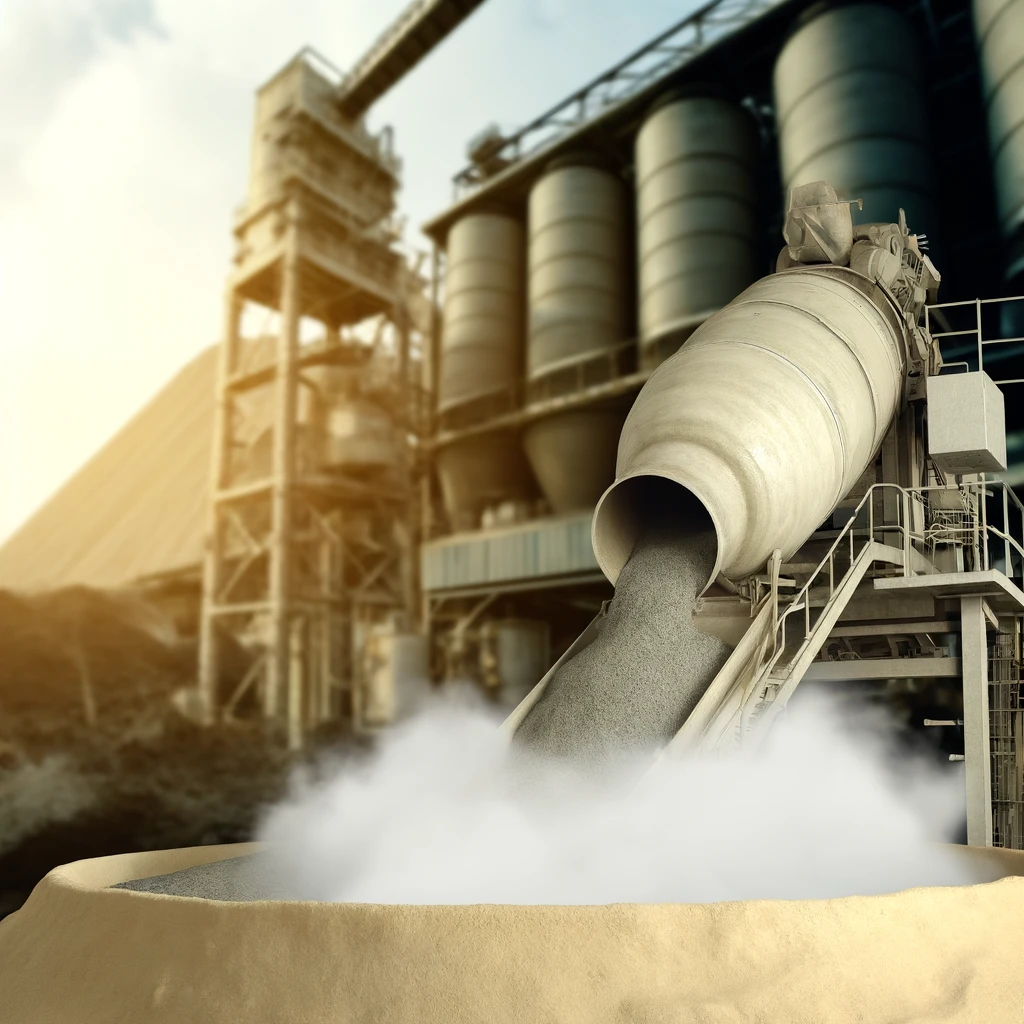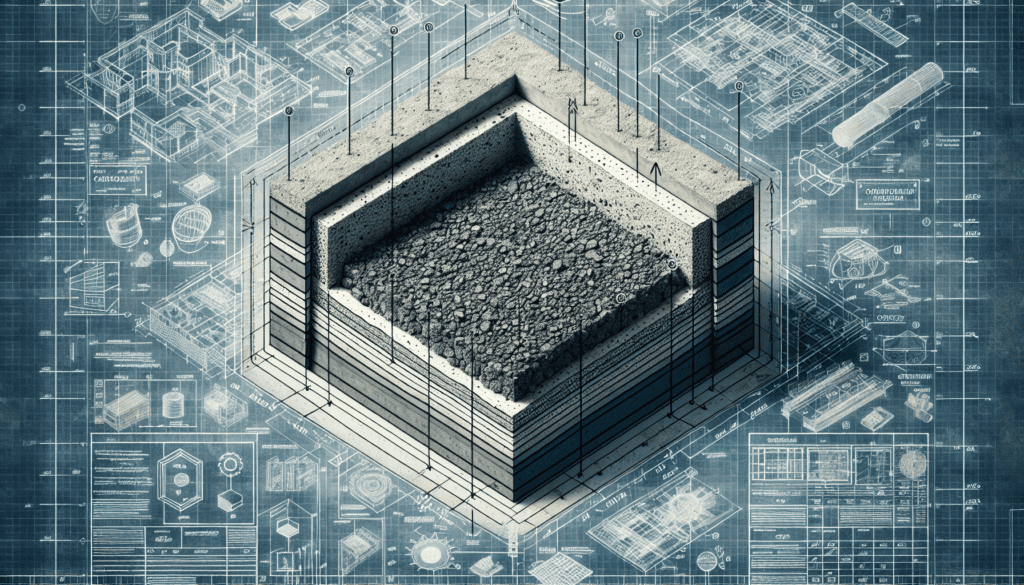The Role of Cement in Construction
Cement, an essential component in construction, holds a significant role in any built structure.
Its quality and type can dramatically influence the stability, durability, and longevity of a project.
This unlikely grey powder – a blend of calcium, silicon, iron, and aluminum – binds other materials together, forming a robust solid structure upon setting and hardening.
In building projects, the cement quality can be the deciding factor in a successful and long-lasting construction or premature decay and failure.
Table of Contents

Ensuring the Quality of Cement for Construction
Properties of cement, from manufacturing quality to chemical composition, are decisive factors in meeting the demands of a construction project. Understanding how to ensure the quality of cement can save time, resources, and increase the durability of construction.
Understanding Cement Composition
The quality of cement predominantly depends on its composition. Here are the compounds you should look for:
- C3S (Tricalcium Silicate)
- C2S (Dicalcium Silicate)
- C3A (Tricalcium Aluminate)
- C4AF (Tetracalcium Aluminoferrite)
Factors to Consider in Cement Quality
Several key indicators can that we must check to ensure cement quality:
- Grade of the cement
- Date of manufacturing
- Color and texture
- Smoothness
- Heat test
Cement Grade
The grade of cement signifies its strength. It is typically marked on the cement bags.
Manufacturing Date
Cement should be used as close to the manufacturing date as possible. Cement older than three months from its manufacturing date can lose its strength.
Color and Texture
Cement should have a uniform color, usually grey with a greenish tint, and it should feel smooth to the touch.
Smoothness
When rubbed between fingers, the cement should feel smooth. If it feels rough, it indicates the presence of adulteration or hydration of the cement.
Heat Test
When hand-inserted into a heap of cement, it should feel cool and not warm.
Lab Testing
For larger projects, consider sourcing cement directly from the manufacturer and performing lab tests. These tests include the initial and final setting time test, compressive strength test, fineness test among others.
Cement Storage
Proper storage is crucial. Cement absorbs moisture from the environment, leading to lumps. It should be stored in a dry place, off the ground and covered adequately.
Ensuring the quality of cement lays the foundation of the durability, stability and strength of construction. By paying attention to these factors, we can make informed choices and keep our structures sturdy for years to come.
For more detailed information, you can consult guidelines issued by international bodies like the National Ready Mixed Concrete Association and the ASTM International standards organization, who frequently update their resources based on latest research and practical insights.
Remember, the quality of your construction project begins from the ground up – don’t compromise on the quality of your cement. Your building’s longevity depends on it.

Cement Brands for Different Types of Construction Projects
When executing construction projects, one of the key considerations for builders and contractors is the type of cement to use.
The choice of cement can greatly affect the quality, longevity, and overall durability of the structure. Differentiating factors, such as brand, composition, and specialty use, all play into which type of cement would best suit a particular construction job.
Top Cement Brands and Their Strengths
LafargeHolcim
LafargeHolcim earns the top spot as a global leader in building solutions, providing a variety of cement types for different uses.
- Classic Cement: Ideal for general building use and perfect for various applications, such as flooring.
- Agilia: A self-placing and self-leveling cement, excellent for concrete that requires a seamless finish and high fluidity.
HeidelbergCement
Rivaling LafargeHolcim, HeidelbergCement offers cement solutions with specific use-cases in mind.
- Standard Portland Cement: Ideal for general purposes and widely used in construction.
- Air Entrained Cement: Perfect for areas exposed to freezing and thawing conditions due to its improved resistance to cold weather.
CEMEX
CEMEX, another international giant in the cement industry, provides products known for their quality and consistency.
- Portland Cement: Great for general purpose use, from concrete sidewalks to bridge decks.
- White Cement: Perfect for architectural uses such as terrazzo flooring, stucco, or grout due to its aesthetic appeal.
Choosing the Right Cement for your Construction Project
The right cement for your construction project is largely dependent on the specific demands of the project, whether it’s general construction, structural building, or specialized architectural designs. Always consider the nature of the construction, weather conditions, and the application methods when choosing cement.
Understanding the strengths of different cement types and the top producers in the industry can offer guidance during the planning stage of any construction project. The importance of making the right choice cannot be overstated since the integrity of the construction depends on it.

Environmental Impacts of Cement Production and Mitigation Strategies
Cement production is an integral process in the construction industry but it, unfortunately, contributes significantly to global emissions. Here’s a closer look at what that means and what can be done about it.
The Environmental Impacts of Cement Production
The process of cement production is energy-intensive, contributing to about 5% of global anthropogenic CO2 emissions according to a study published in Journal of Cleaner Production.
Greenhouse Gas Emissions
Cement production is a significant player in terms of greenhouse gas (GHG) emissions, with the main culprits being:
- CO2 from the calcination process
- CO2 from combustion of fossil fuels
Other Environmental Impacts
In addition to GHG emissions, cement production can also:
- Increase airborne pollutants
- Degrade local land and ecosystems due to quarrying of raw materials
- Contribute to water pollution
Methods of Mitigating Cement Production’s Environmental Impacts
Despite the negative environmental impacts, significant strides have been made with new technologies, strategies, and practices to make cement production greener.
Energy Efficiency and Alternative Materials
A common method to mitigate the environmental impacts includes:
- Improving energy efficiency in the production process
- Using alternative fuels and raw materials (AFR) like industrial waste materials or by-products
Carbon Capture Technology
This is a rising trend with technologies capturing and storing CO2 emissions arising from the cement production process. Global CCS Institute reports this can reduce emissions by up to 90%.
Lower-Carbon Cement Alternatives
Some companies have started to produce lower-carbon alternatives to traditional cement. These can have lower embodied carbon and still meet performance requirements.
Table: Comparing Traditional Cement and Lower-Carbon Alternatives
| Aspect | Traditional Cement | Lower-Carbon Alternative |
|---|---|---|
| CO2 Emissions | High | Reduced |
| Energy Consumption | High | Lower |
| Performance | Established | Comparable |
While cement production does have substantial environmental impacts, promising mitigation strategies are emerging. With concerted efforts across the industry, more sustainable practices can help to reduce the global carbon footprint.

Concluding Our Conversation On Cement
In conclusion, we’ve found that cement production, though indispensable in the construction sector, significantly contributes to greenhouse gas emissions and other environmental impacts.
These range from increased airborne pollutants to the degradation of local ecosystems. However, there’s a clear recognition of the issue and the situation isn’t dire.
From our perspective, promising mitigation strategies, such as improving energy efficiency, using alternative raw materials, implementing carbon capture technology, and developing lower-carbon cement alternatives, are already in play to counter the environmental fallout.
The comparison of traditional cement and lower-carbon alternatives shows promising results; lower in CO2 emissions and energy consumption while providing comparable performance.
Despite the challenges, the construction industry is heading towards a more sustainable future. It’s clear to us that with continued efforts, improvements, and adoption of these mitigation strategies, we can substantially reduce the environmental impacts of cement production.






